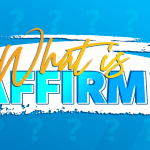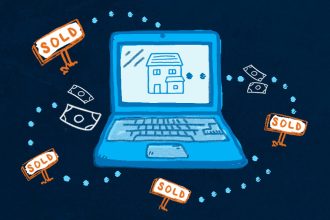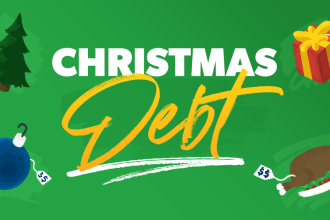You might consider an SBA microloan if you’re trying to start a business or expand your current small business. These loans are available for $50,000 or less and come with low interest rates and flexible repayment terms.
Before applying, however, it’s key that you understand how the program works and its eligibility requirements, as this information will help you determine whether or not an SBA microloan is the right choice for your business. Let’s start with the basics…
What is an SBA microloan?
The SBA microloan program provides small loans up to $50,000, and it’s designed for small businesses and eligible nonprofits. According to the SBA, the average microloan is around $13,000.
These loans can be used for working capital needs and to purchase equipment and inventory. However, it’s also worth noting that you can’t use the funds to pay down existing debt or buy real estate.
When you receive a microloan, the funds won’t come directly from the SBA. Instead, the SBA provides the funds to intermediary lenders, which are usually nonprofit, community-based organizations.
SBA microloan requirements.
SBA microloans are available to all for-profit small businesses and certain nonprofit child care centers. Unlike other types of loans, you may qualify even with a limited credit history.
That’s because microloans are designed for individuals who might struggle with qualifying for a traditional loan. That includes women– and minority-owned businesses and borrowers from low-income communities.
Of course, each lender will have its own eligibility requirements, but most will ask for some type of collateral and a personal guarantee from the business owner. Some SBA microloan lenders will have credit and cash flow requirements, while others may not. Some lenders will also restrict eligibility to specific geographic areas such as a county, state or city.
Rates and repayment terms.
The interest rates will vary depending on your lender, but they typically range between 6% and 9%. And repayments terms are available for up to six years.
| SBA microloan stats | |
| Term Length | Up to 6 years |
| Loan Amount | Up to $50,000 |
| Interest Rates | 8-13% |
| Packaging Fees | Up to 3% |
Pros and cons of SBA microloans.
Now that you understand what an SBA microloan is and what the basic requirements can be, an understanding of its pluses and minuses can help you make the right call for your business:
Pros
- Easier to qualify for: If you’re a startup or don’t have much business history, it can be hard to qualify for a business loan. Microloans, on the other hand, come with less stringent requirements, having been built to provide financing to businesses that traditionally struggle to find funding.
- Faster funding: If you apply for a traditional SBA loan, the application and funding process can take months to complete. In comparison, you could receive funding through your microloan in just 30 days.
- Low interest rates: Like all SBA loans, microloans come with low interest rates. The rates will vary depending on your lender, but the average rate is between 6% and 9%.
- Flexible loan terms: SBA microloans come with repayment terms of up to 6 years, so your monthly payments are more affordable.
Cons
- Small loan amounts: If you need to borrow more than $50,000, the microloan program might not be the best option for you.
- Spending restrictions: SBA microloans do come with certain spending restrictions. For instance, you can’t use the funds to pay down existing debt or purchase real estate.
- Lenders may charge fees: The SBA caps its fees, but individual lenders can charge their own fees. For instance, you may have to pay an application fee, loan processing fee, or closing costs.
Availability is limited: Since SBA microloans are offered by nonprofit intermediary lenders, these loans can be harder to find. These lenders don’t have the resources and staff that larger lenders have, so these loans might not be available in your area.
How to apply for an SBA microloan.
Since the SBA doesn’t distribute the funds, the first step is to find an SBA-approved intermediary lender in your area. Fortunately, the SBA has hundreds of lending partners located across the country and provides a Lender Match Tool to help you find a microloan lender.
Most lenders will require you to either speak to a lending specialist over the phone or apply in person. The lender you work with will inform you about any necessary paperwork and documentation to apply. In addition, some lenders may require that you complete a workshop or training program as part of the application process.
Once you’ve submitted all the required paperwork, your application is complete, and your lender will review and process the loan.
Alternatives to SBA microloans.
If you’re not sure if an SBA microloan is the right fit for your business, here are some alternatives to consider:
- SBA 7(a) loans: SBA 7(a) loans are a good choice for businesses that need larger loan amounts. These loans are available for up to $5 million, but the qualification criteria are more strict.
- Business credit cards: A business credit card can be used for any business purchase, and the application process is relatively easy. If you go this route, look for a card with an introductory 0% APR.
- Invoice financing: If you have a lot of cash tied up in your unpaid invoices, invoice financing allows you to leverage your outstanding invoices to get access to capital.
The bottom line.
SBA microloans can help startups and small businesses access the capital they need. These loans are a good option for traditionally underserved borrowers, like women and minorities. If you’re interested in exploring your loan options, you can use Lendio to quickly compare loan offers from multiple lenders.
Quickly compare loan offers from multiple lenders.
Applying is free and won’t impact your credit.
Information provided on this blog is for educational purposes only, and is not intended to be business, legal, tax, or accounting advice. The views and opinions expressed in this blog are those of the authors and do not necessarily reflect the official policy or position of Lendio. While Lendio strives to keep its content up-to-date, it is only accurate as of the date posted. Offers or trends may expire, or may no longer be relevant.
The post SBA Microloans: A Comprehensive Guide appeared first on Lendio.
Read the full article here














